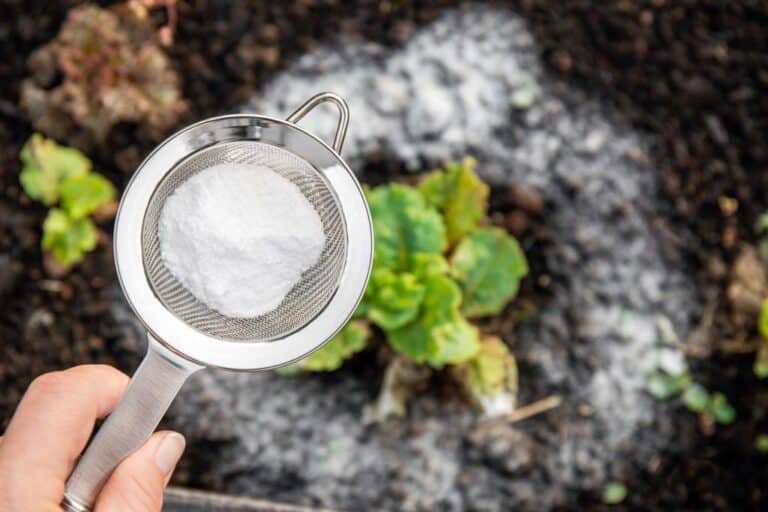Advantages and Disadvantages of Land Clearing in Agriculture

Farmers have deep-rooted traditions of clearing land for farming. They use a wide range of methods to turn wild or uncultivated land into arable fields ready for farming. Land clearing is key. You can do it by hand or with powerful machines. It unlocks vast agricultural potential in many landscapes.
But, this change is not without controversies and complexities. It has stirred debates about its effects on biodiversity, ecosystem health, and climate stability.
This article will focus on the advantages and disadvantages of land clearing in agriculture. We will explore the benefits of land clearing. It brings increased farm output, better soil, and easier farm access.
We will also discuss the bad impacts of land clearing. These include loss of biodiversity, soil erosion, and more greenhouse gas emissions. Farmers can make informed decisions about when and how to clear land for agricultural purposes after understanding the pros and cons of land clearing.
Introduction to Land Clearing in Agriculture
In agriculture, land clearing is the process of removing trees, vegetation, and other obstacles from land. This makes the land suitable for farming. It is a key step in farming. It lets farmers grow their operations, make more stuff, and increase productivity.
Land clearing is important for agricultural purposes, as it helps farmers create more arable land for mixed crops and livestock farming. Clearing land lets farmers remove competing vegetation, rocks, and other obstacles. These things can hinder farming.
The significance of land clearing in agriculture cannot be overstated. It serves as the foundational step. It allows farmers to expand their operations, increase food production to meet growing global demands, and pave the way for sustainable land management practices.
Land clearing opens up new areas for planting crops or grazing livestock. It holds immense promise for boosting farming. But, it also brings challenges that echo environmental concerns and conservation efforts.
This discourse is about land clearing in agriculture’s dual nature. It’s both a boon and a bane. Navigating this terrain demands a nuanced understanding of its many impacts on our ecosystems and food systems.
Advantages of Land Clearing in Agriculture

Clearing land for agriculture offers many advantages. These advantages are crucial in boosting farm productivity and promoting sustainable practices.
- Increased Agricultural Production: Clearing land allows farmers to expand their crop or livestock operations, leading to increased production and potentially higher profits.
- Improved Soil Quality: Clearing land can expose nutrient-rich soil that was previously covered by vegetation, leading to improved soil quality and better crop yields.
- Easier Access: Cleared land is easier to access and work on, making farming operations more efficient and cost-effective.
- Reduced Pest and Disease Pressure: Clearing land can help reduce the presence of pests and diseases that thrive in dense vegetation, leading to healthier crops and livestock.
- Expansion of Farm Infrastructure: Cleared land provides more space for farm buildings, equipment storage, and other infrastructure improvements.
- Enhanced Water Management: Clearing land can improve water drainage and management, reducing the risk of waterlogging and soil erosion.
Also, making arable land by clearing land strategically creates opportunities. It allows for growing diverse crops and expanding farms. The process allows farmers to pick good areas for cultivation. They use soil quality and access to water. This lets them make informed decisions that fit long-term sustainability goals.
Disadvantages of Land Clearing in Agriculture
- Loss of Biodiversity: Clearing land can lead to the loss of habitats for wildlife and plants, reducing biodiversity in the area.
- Soil Erosion: Removing vegetation can expose soil to erosion by wind and water, leading to the loss of fertile topsoil.
- Increased Greenhouse Gas Emissions: Land clearing releases carbon stored in plants and soil. This adds to greenhouse gas emissions and climate change.
- Impact on Water Quality: Clearing land can increase sediment runoff into water bodies, leading to water quality issues.
- Loss of Ecosystem Services: Clearing land can reduce the provision of ecosystem services such as pollination, natural pest control, and soil fertility maintenance.
- Costs and Effort: Clearing land can be expensive and labor-intensive, especially for large areas or in difficult terrain.
Changes to land cover patterns also affect regional climates. They do this by altering temperature regulation and precipitation. These factors are interconnected. They show the close relationship between land use practices, like clearing for agriculture, and broader environmental issues. These issues include climate change efforts.
Land Clearing and Increased Agricultural Productivity
Land clearing in farming has boosted productivity. It lets farmers expand their fields and increase food production. By creating new arable lands through clearing processes, farmers can increase their crop yields and meet the rising demands for food supplies.
One of the key advantages of land clearing for agricultural productivity is the ability to expand farming operations. Clearing land provides farmers with additional space. They can then plant crops or raise livestock. This allows them to increase production and meet the growing demand for food. This is particularly important in regions where arable land is limited, as it allows farmers to make the most of available land resources.
This higher productivity helps individual farmers. It also boosts food security regionally and globally. In crowded regions, land is scarce. This makes agricultural development a challenge. But, land clearing is a viable solution to boost farm output sustainably.
Impact on Climate Change
Clearing land for farming has big impacts on climate change. It’s a double-edged sword. It shapes both emissions and carbon storage. Deforestation releases lots of stored carbon into the air. It amplifies greenhouse gases. But the long-term effects are also crucial.
Cutting down many trees disrupts natural carbon sinks. It reduces the environment’s ability to heal itself. Consequently, this process not only accelerates global warming but also hampers mitigation efforts by undermining nature’s inherent mechanisms for balancing atmospheric composition.
Moreover, it increases greenhouse gas emissions. Land clearing worsens climate change through tangled feedback loops with deforestation. The loss of forests not only decreases carbon storage potential but also alters regional weather patterns and reduces biodiversity resilience—factors critical in mitigating climate shifts.
These cascading effects create a ripple effect that extends far beyond agricultural boundaries. It magnifies environmental vulnerabilities, intensifies the urgency for sustainable land management practices to mitigate climate-related risks. Recognizing these relationships is essential. They intertwine land use decisions and their broader environmental effects. This recognition is key for fostering adaptive strategies. These strategies must prioritize both ecology and agriculture. This is all amidst our changing climate.
Conclusion: Embracing Innovation for Sustainable Land Clearing Practices
We navigate the complex land clearings in agriculture. One fact is clear: a balanced approach is essential. The mix of challenges and opportunities demands a nuanced strategy. It must integrate modern technology smoothly into farming. In our quest for efficient food production, it is imperative to harness innovation not as a mere supplement but as the cornerstone of sustainable practices.
Modern advancements include precision farming, remote sensing, and AI-driven analytics. They offer a glimpse into the future of land clearing. Farmers can use these tools smartly. They can improve their operations while cutting their ecological footprints. A new data-driven approach is causing a paradigm shift. It ensures that every tree felled or acre cleared serves a purpose beyond immediate gains. It becomes part of a larger narrative where efficiency meets conservation.
In closing, the call is loud and clear: embrace innovation. Tread lightly on the earth. And sow seeds today for tomorrow’s fruit. The split between progress and preservation need not be adversarial. Instead, let us use technology as our ally. We can use it to cultivate landscapes that thrive sustainably for future generations.






